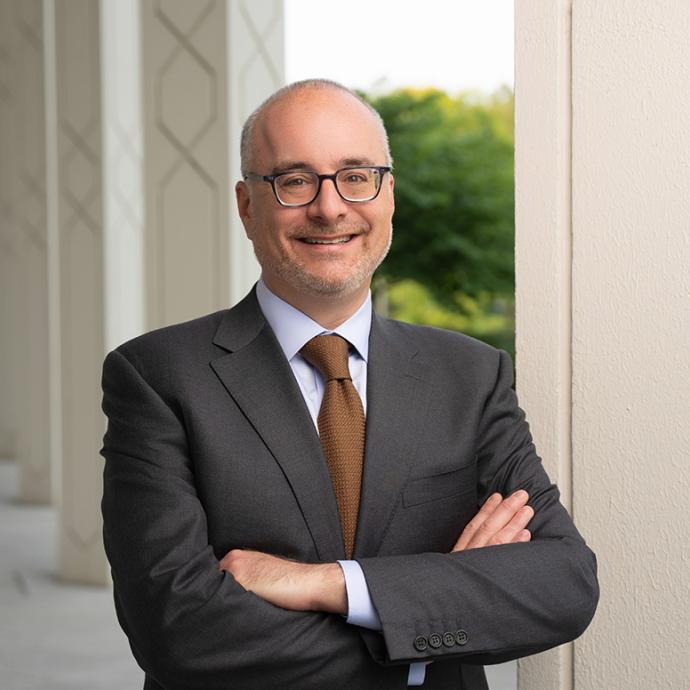Prof. Emeritus Robert Gomer, a chemical physicist who pioneered techniques for studying molecules and taught at the University of Chicago for nearly a half-century, died Dec. 12 of complications related to Parkinson’s disease. He was 92.
In his research, Gomer studied the emission, diffusion and absorption of atoms and molecules on ultraclean surfaces. That work started, Gomer once wrote, “after hearing a seminar account of E.W. Muller’s field emission microscope. I built one and became active in developing this instrument as a tool for surface studies.”
Gomer was a pioneer in the modern discipline of surface physics and chemistry, said Steven Sibener, the Carl William Eisendrath Distinguished Service Professor in Chemistry and the James Franck Institute. “His lifelong work on the surface diffusion of atoms and adsorbates on metallic surfaces represent research that has withstood the test of time, and provided foundational information for the generations of researchers that followed in his areas of interest.”
Gomer first came to the University in 1950 as an instructor in the Department of Chemistry and the James Franck Institute. He served as director of the James Franck Institute from 1977 to 1983 and was named the Carl W. Eisendrath Distinguished Service Professor in 1984.
“Chicago offered a sense of belonging and a sense of being a part, however modestly, of a great adventure,” Gomer once wrote. Richard Gomer said his father will be fondly remembered for his collegiality.
“He viewed his colleagues and students as family,” said Richard Gomer, a professor of biology at Texas A&M University. “He loved having lunch with chemists and physicists daily at the Quad Club. It was a real meeting of the minds, but one that would often end with a game of billiards.”
After Gomer became a professor emeritus in 1996, he and his wife, Ann, organized regular interdisciplinary talks for faculty in their Hyde Park home. “This is the institution that became, about five years ago, the Robert and Ann Gomer lecture series, which I chair and which meets about six times a year,” said David Bevington, the Phyllis Fay Horton Distinguished Service Professor Emeritus. “Bob was a true inspiration to us all and will be greatly missed.”
Gomer approached science and research “as a contest with nature,” said Lanny Schmidt, Gomer’s former student and now a professor of chemical engineering and materials science at the University of Minnesota. “He personalized every problem in a way that made it fun to do research. The tedious tasks were still part of the overall contest.
“One time we were working on an intricate spot-welding problem,” Schmidt added. “Upon completion Bob said, ‘Now we’ve got Mother Nature right where we want her!’”
Richard Gomer recalls that his father was a tough grader who wasn’t afraid to give out Ds and Fs. “His only reason for doing this was to set high standards, as he always did for himself, as well as for others,” he said. “This inspired many people to pursue research. He spent a minimal amount of time in his office; he was constantly working in the lab.”
Critic of nuclear weapons
Born in Vienna, Austria in 1924, Gomer went to England in 1938 as a refugee child, came to the United States in 1940 and went to Pomona College. After serving in the U.S. Army, he received his PhD in chemistry at the University of Rochester in 1949.
Gomer was an outspoken opponent of the proliferation of nuclear weapons. He was a regular contributor to and chaired the editorial board of the Bulletin of Atomic Scientists, a journal founded by Manhattan Project physicists that covers policy issues related to the dangers of nuclear weapons.
In 1966, Gomer was one of four scientists who wrote a classified report for the Department of Defense about the potential use of nuclear weapons in the Vietnam War. “Tactical Nuclear Weapons in Southeast Asia” concluded that such strikes would be catastrophic for U.S. global interests. “It was our purpose to show that using nuclear weapons would be an immoral folly and set an awful precedent,” Gomer said.
Gomer was elected a member of the National Academy of Sciences in 1981. He was an Atomic Energy Commission Postdoctoral Fellow at Harvard University and an Alfred P. Sloan Research Fellow at UChicago. He also was a Guggenheim fellow at the University of Paris, and a Fulbright fellow at the Technical University of Vienna.
He won several awards, including the Bourke Lecturer from the Faraday Society, the Kendall Award in Colloid or Surface Science from the American Chemical Society, the Senior U.S. Scientist Award from the A. von Humboldt Society, and the Davisson-Germer Prize in Surface Physics from the American Physical Society.
He wrote Field Emission and Field Ionization (1961) and edited several scientific journals, including Applied Physics.
“We shared many conversations on the nature of atomic-level dynamics at interfaces,” Sibener said. “This topic and associated scientific advances remain at the forefront of science today, contributing many crucial ideas to what is now popularly referred to as the field of nanoscience.”
Gomer is survived by his wife, Anne; son Richard; daughter, Maria Luczkow; and grandchildren Katie, Anna and Julia.










 —Prof. Kunle Odunsi
—Prof. Kunle Odunsi
